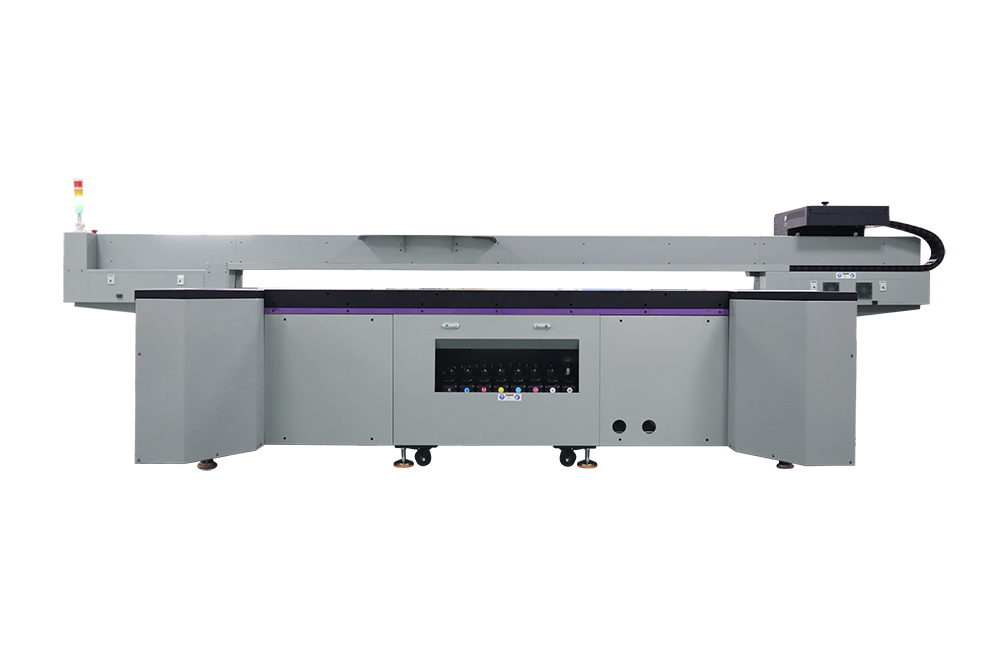UV Flatbed Printer: A Guide to Achieving High-Quality Finishes
UV Flatbed Printer: A Guide to Achieving High-Quality Finishes
In the world of printing technology, the UV flatbed printer stands out as a versatile and efficient machine capable of producing high-quality finishes on various materials. This guide aims to provide an overview of UV flatbed printers, explore the key factors that contribute to achieving excellent print quality, and offer practical tips for optimizing your printing process.

Introduction to UV Flatbed Printers
UV flatbed printers are digital printing devices that use ultraviolet (UV) curing inks to produce high-resolution images and graphics directly onto a wide range of substrates. These printers are renowned for their versatility, as they can print on almost any flat surface, including glass, metal, plastic, wood, and even leather. The UV curing process allows the inks to dry instantly under UV light, resulting in a durable and long-lasting finish.
Key Factors for High-Quality Finishes
Ink Quality: The quality of the ink used in UV flatbed printers plays a crucial role in achieving high-quality finishes. It’s essential to use inks specifically designed for UV curing processes, as they are formulated to adhere properly to various substrates and produce vibrant colors with excellent durability.
Printer Resolution: The resolution of the printer, measured in dots per inch (DPI), determines the clarity and detail of the printed image. A higher DPI count means more dots are placed per inch, resulting in a sharper, more defined print. Look for printers with high DPI capabilities to ensure the best possible print quality.
Substrate Preparation: The surface of the material being printed on must be clean, dry, and free of contaminants. Proper substrate preparation ensures that the ink adheres properly and produces a smooth, professional finish.
Color Management: Consistent color reproduction is essential for achieving high-quality prints. Implementing a color management system ensures that colors are accurately represented from design to final print, minimizing variations and maintaining consistency across different print jobs.
Printer Maintenance: Regular maintenance of your UV flatbed printer is crucial for maintaining optimal performance and print quality. This includes cleaning the print heads, replacing worn parts, and ensuring that all mechanical components are functioning properly.
Optimizing Your Printing Process
Choosing the Right Substrate: Not all materials are suitable for UV flatbed printing. Select substrates that are compatible with UV inks and can withstand the curing process. Experiment with different materials to find the ones that yield the best results.
File Preparation: Preparing your design files properly is essential for achieving crisp, clear prints. Use high-resolution images and graphics, and ensure that colors are accurately represented in your design software.
Printer Settings: Familiarize yourself with the various printer settings and adjust them according to the specific requirements of each print job. This includes settings for ink density, print speed, and curing time, all of which can affect the final print quality.
Testing and Calibration: Regularly perform test prints to ensure that colors are accurately reproduced and that there are no issues with ink adhesion or curing. Calibrate your printer regularly to maintain consistency in print quality.
Post-Processing: Depending on the substrate and the desired finish, some post-processing steps may be necessary. This could include cutting, laminating, or applying a protective coating to enhance durability.
Conclusion
Achieving high-quality finishes with a UV flatbed printer requires attention to detail and a thorough understanding of the printing process. By investing in quality inks, preparing substrates properly, managing color reproduction, and maintaining your printer, you can consistently produce professional-looking prints that meet or exceed your customers’ expectations. Remember, each substrate and print job may require unique settings and adjustments, so it’s important to experiment and refine your process to achieve the best possible results. With the right approach and attention to detail, your UV flatbed printer can become a powerful tool for creating high-quality printed products.
